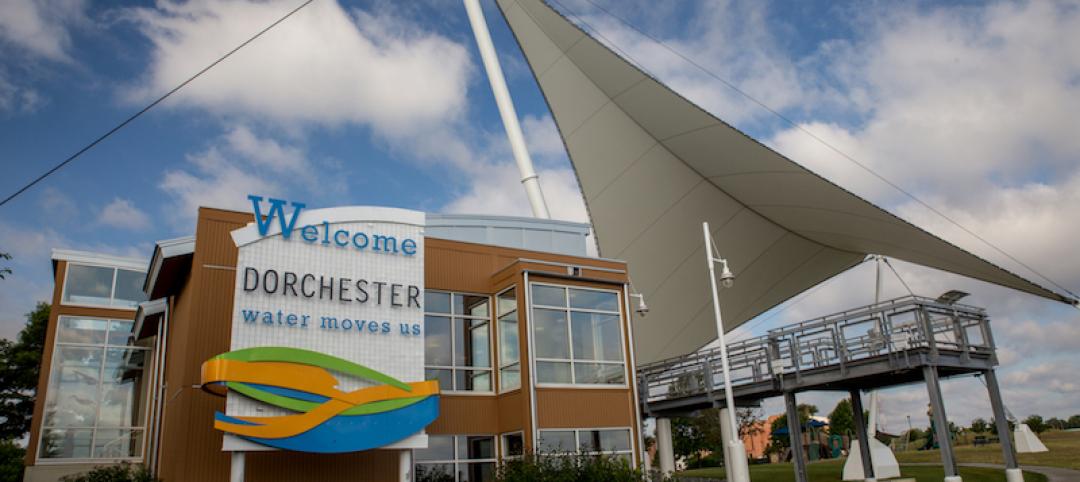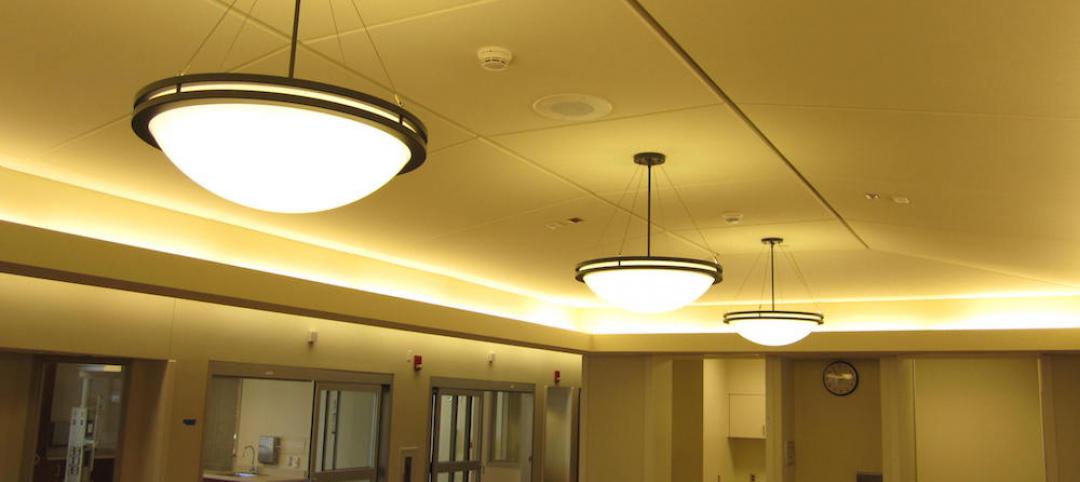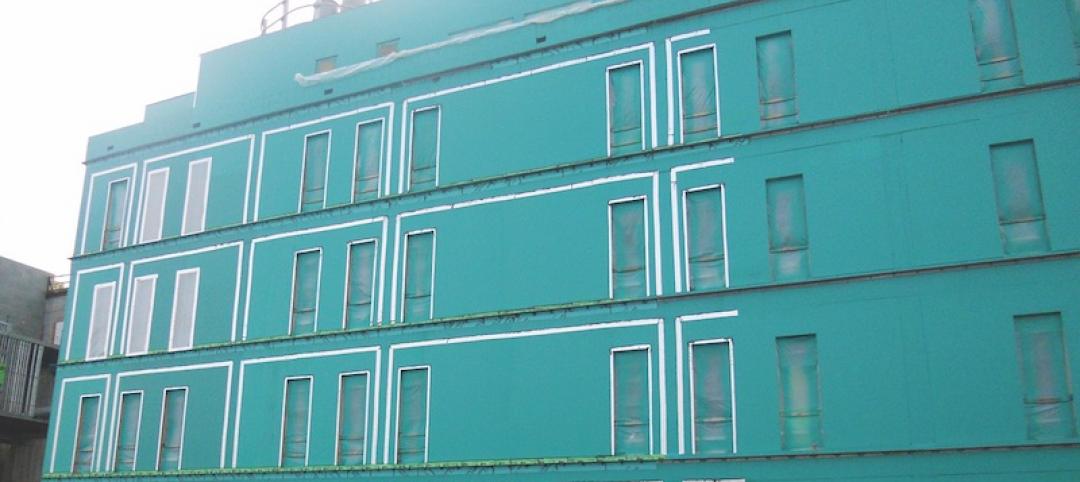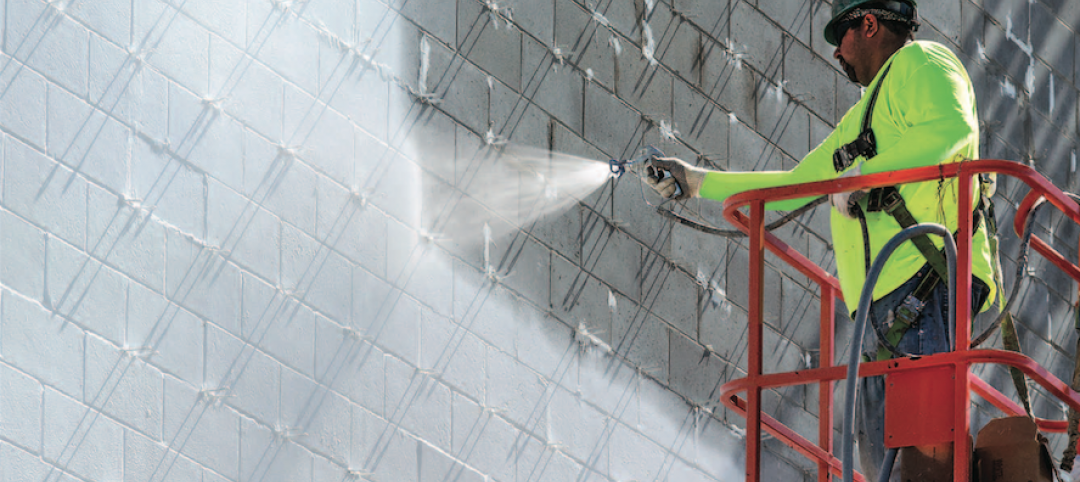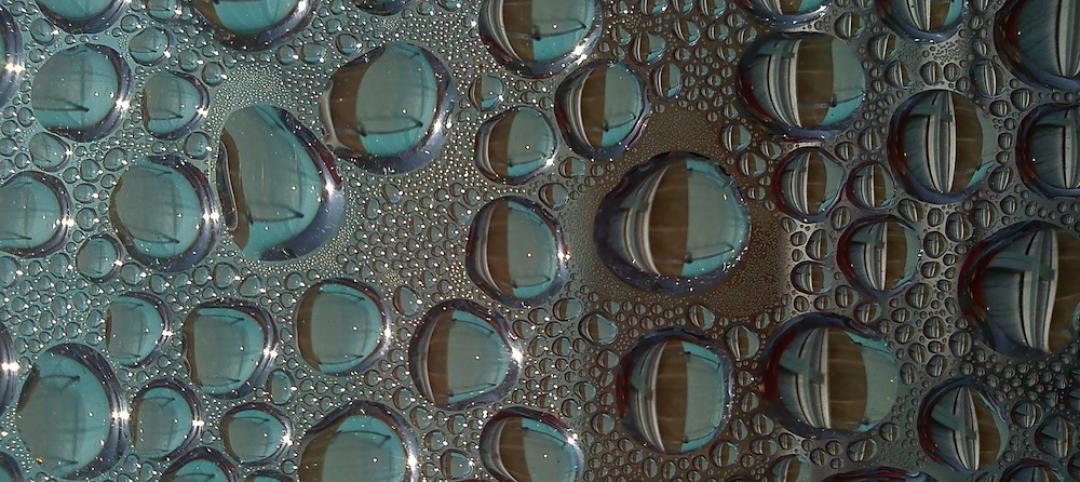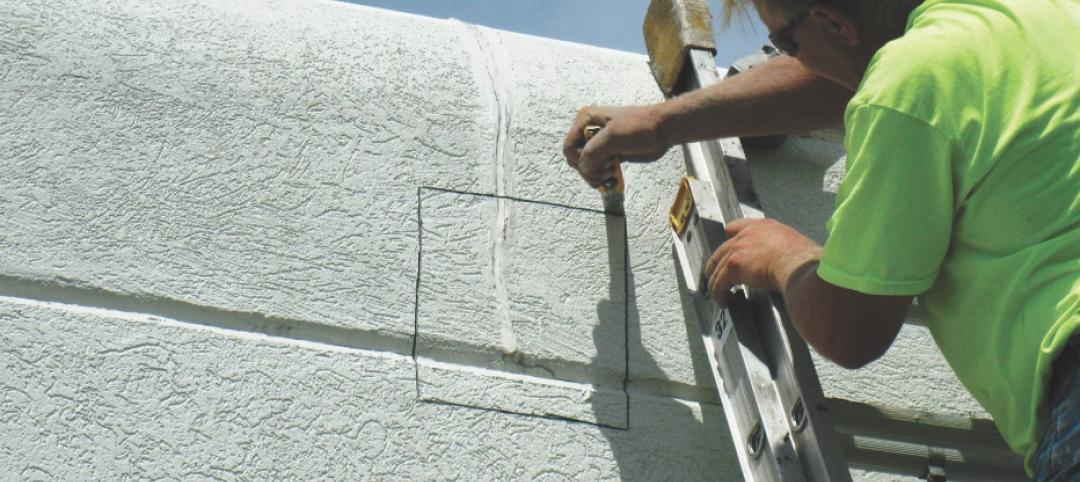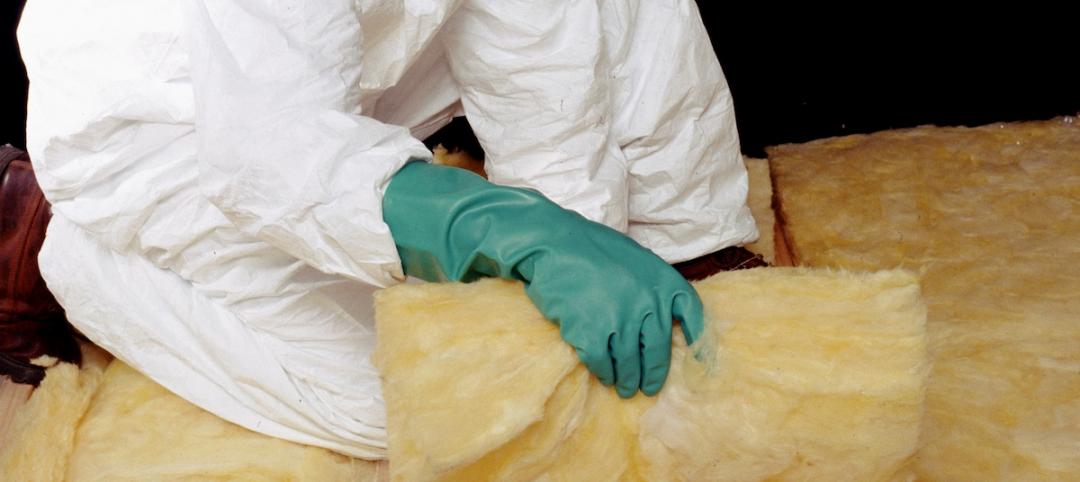 |
| The solar shade of the Art Institute of Chicago’s Modern Wing was designed to collect and redirect natural light from the north and filter out intense southern light. |
Italian architect Renzo Piano refers to his $294 million, 264,000-sf Modern Wing of the Art Institute of Chicago as a “temple of light.” That's all well and good, but how did Piano and the engineers from London-based Arup create an almost entirely naturally lit interior while still protecting the priceless works of art in the Institute's third-floor galleries from dangerous ultraviolet rays?
Piano addressed that concern by hanging a 216-foot-wide “flying carpet” canopy over the glazed roof of the Modern Wing's east building to filter light and eliminate the threat to the art. This sunshield, supported by steel bracings above the museum's third-floor galleries, is composed of thousands of extruded aluminum “blades” precisely angled to collect and redirect natural light from the north and filter out the dangerous and more intense southern light. Additional screening and computer-adjusted electrical lighting achieve the ideal combination of appropriate lighting, reduced electrical expenses, and art preservation. All of this contributed to the Modern Wing, which opened last May, achieving LEED Silver certification.
“This is made easier in a city that is built on precise north-south and east-west axes, perfectly in tune with the cycle of the sun, like a solar machine,” Piano wrote in notes to his original Modern Wing drawings.
 |
| The sprawling sunshade also shields patrons from the sun on the Art Institute’s third-floor, 3,400-sf viewing deck that leads to a bridge to nearby Millennium Park, seen here from the viewing deck. The bridge was also designed by Renzo Piano. |
Robert Lang, lead structural engineer on the project, has been with Arup for 27 years and has spent 20 of those years working with Piano on his projects. He's worked on similar shading and screening devices for Piano's designs of the Los Angeles County Museum of Art, the Lingotto Factory Conversion in Turin, Italy, and the Beyeler Foundation near Basel, Switzerland.
The blades are roughly 13-and-a-half feet long and are situated very crudely at an angle of 45 degrees, says Lang. “They are sculpted and shaped so that they're structurally stable,” he says. “At the low end they're open to the north to allow the indirect northern light in. At the east and west ends they have a series of fins attached to them to catch and block southern light.”
There are more than two thousand small blades on the 46,600-sf “flying carpet,” each supported at two anchor points. The blades were computer-modeled by Arup for maximum energy efficiency and custom fabricated by Sapa RC Profiles in Belgium, which shipped each blade to the site ready for installation. Inside the Modern Wing, a finely calibrated dimming system uses photocells to adjust the supplied lighting to fluctuations in daylighting levels according to time of day, season, and weather. The ceiling and roof of the Modern Wing have two layers of glass and two separate shading systems.
 |
| This sketch by architect Renzo Piano shows how building orientation was used to gather and take advantage of northern light at the Art Institute. |
All of Piano's shading devices share common elements from project to project, but the Art Institute's solar shade had to be specially reinforced to withstand changing temperatures and winds of the city's lakefront. “The climate in Chicago, being as severe as it is, was a concern,” says Lang. “For the force of wind, the blades were designed to withstand movement due to high wind by heavy anchoring in the two positions they were affixed to.” Horizontal directional movement was less than 1.1 inches.
“When it comes to temperature fluctuation, we basically allowed the shade structure to expand and contract due to temperature, always away from the center,” says Lang. “The ends of the roof need to be quite large, and the steelwork was anchored to the support polls and outer walls, one solidly, the other less solidly, to allow for expansion and contraction.”
Each of Piano's Modern Wing flying carpet canopies extends its edge panels out past the last supporting side of the building below to increase the sense of lightness, so the solar shade appears to dissolve at its endpoint. Each roof beam supporting the Art Institute's flying carpet was fabricated offsite and sent to the site as a single piece to be installed.
 |
| This photo of the ceiling of the East Building, taken during construction, shows the rooftop blades without interior shades below the glass roof. |
Inside each beam is a prestressed steel joint that was joined onsite to the lower structure or another beam. Each beam had to be installed in sequence, as the beams make up a web of tolerances that all depend on one another. The intricate web spun by Piano created the desired look of openness and weightlessness.
“I think the story we are telling with the new addition is about accessibility,” Piano wrote in his notes about the addition. “It's about openness. It's about a building that should not be intimidating.”
Related Stories
BD+C University Course | Apr 12, 2018
Meeting the demand for high-efficiency façades [AIA course]
On a national scale, the impetus to improve building energy performance is manifest in the latest and most far-reaching model energy code from the International Code Council.
75 Top Building Products | Mar 21, 2018
101 Top Products: Building Envelope 2018
Among the best building envelope products included in BD+C's Top 101 Products report are Eldorado Stone's GenFlex EPDM Adhesive, Henry Company's Henry Restoration System, and Dryvit's NewBrick Brick System.
Sponsored | | Feb 28, 2018
Quality Products Needed To Meet Green Building Standards Today
Sustainable healthcare facilities will need energy-efficient building enclosures from the outset.
Products and Materials | Dec 20, 2017
Liquid air barrier goes on, rain or shine
The silyl-terminated polyether (STPE) liquid-applied air barrier does not wash off when exposed to light rain following application.
Building Enclosure Systems | Jul 26, 2017
Balcony and roof railings and the code: Maintain, repair, or replace? [AIA course]
Lacking familiarity with current requirements, some owners or managers complete a roof or balcony rehabilitation, only to learn after the fact that they need to tear noncompliant railings out of their new roof or terrace and install new ones.
Building Enclosure Systems | Dec 12, 2016
The 100-year enclosure: Strategies for heat-air-moisture control
Should institutional and commercial buildings be built to last 100 years? Why not? There are plenty of examples that have performed well for a century or more.
Building Enclosure Systems | Apr 12, 2016
Water Vapor Migration 101 [AIA course]
This course will describe how to select vapor retarders to control moisture migration and prevent condensation within the building enclosure. To earn 1.0 AIA CES HSW learning units, study the article carefully and take the exam.
| Jan 28, 2016
AIA CES class: The rainscreen approach to a better building envelope
Building envelope expert Bradley Carmichael of Hoffmann Architects explains how rainscreen wall systems work and evaluates the effectiveness of various rain-control methods, including mass walls, perfect barriers, and masonry veneers. This AIA/CES class is worth 1.0 learning unit.
| Jan 14, 2016
How to succeed with EIFS: exterior insulation and finish systems
This AIA CES Discovery course discusses the six elements of an EIFS wall assembly; common EIFS failures and how to prevent them; and EIFS and sustainability.
Insulation | Oct 19, 2015
The expert’s guide to insulation materials
Even the best-designed envelopes can be undermined by thermal bridging in areas where insulation is deficient. Building envelope experts offers advice.


![Meeting the demand for high-efficiency façades [AIA course] Meeting the demand for high-efficiency façades [AIA course]](/sites/default/files/styles/list_big/public/AIA_BDC1217.jpg?itok=SOjPFpxR)
